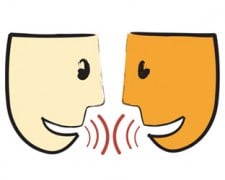 What are the chances for survival for the AM band, the senior broadcast medium in the US? According to users of Streamline’s Radio Discussions board, finding compelling programming is one thing; maintain expensive hardware is another; and fending off hungry real estate agents may be the most challenging.
What are the chances for survival for the AM band, the senior broadcast medium in the US? According to users of Streamline’s Radio Discussions board, finding compelling programming is one thing; maintain expensive hardware is another; and fending off hungry real estate agents may be the most challenging.
The conversation has been taking place on Radio Discussion’s New York thread.
As for programming, it was noted that most big markets have a successful AM station or two. But one commenter said that the main thing keeping the band alive is the fact that the Sports format has not yet found room on the FM dial, which is already crowded. Opinions ran a bit cooler on the importance of political talk and its aging audience, religious and other niche formats, or the handful of music formats still found on stations that list their channel followed by a kHz.
One person believes that using the AM band to house niche musical formats, presented in a fun way, might inject some life into the band; others are skeptical of that approach.
It was said that AM stations face large fixed costs that put them behind the eight ball before they even attempt to sell enough advertising to make a profit on a band where many listeners rarely venture. This is particularly true of directional stations maintaining two or more towers.
Finally, it was noted that an AM station in Los Angeles moved; the station was sold for $9M. The plot of land that it abandoned sold for $30M. Such disparities in pricing on the open market do not bode well for the future of the AM band.
See and participate in the thread here:
Radio Discussions New York thread
http://www.radiodiscussions.com/showthread.php?670945-Why-is-AM-still-around






I believe that the savior for AM radio is something I call “Niche Programming.” Many downtown areas in various cities became ghost towns when the malls opened. But some cities have fixed up their downtown neighborhoods and have gone after a specific type of business. The “Specialty Shop.” STUFF YOU CAN’T GET AT THE MALL. And as a result many downtown areas are making a comeback. The same can be done with AM radio. Call it “Specialty Formats.” STUFF YOU CAN’T GET ON THE FM DIAL. One such example would be a 50’s and 60’s oldies format. Yes, it is an older demographic. But they are still out there and they spend money too. No, you won’t be making Bill Gates money but if done right this kind of format would be very successful and make money. And yes, I know how to do it. AM & FM radio have more competition now then ever before. To succeed, you MUST think outside the box. Those oldies are STILL goodies. And just waiting to be picked off the vine. Time to put on the work gloves.
I second that motion with the greatest of enthusiasm — I’m sure there are many more things “you can’t get on the FM dial” that could, with a little elbow grease and promotion, find an audience!
The “downtown shopping areas” are a great analogy, Curt. I agree that there are holes that innovative, visionary programmers can inject with niche content to attract a listener base to AM Radio. The challenges will be (1) convincing the companies that control the frequencies to take a chance on that programming, (2) giving the programming enough time to find an audience with little or no available marketing dollars available and (3) generating enough revenue from a niche format with marginal ratings to sustain the experiment into profitability.
I guess it is time to list the problems with “AM” radio.
1. The average receiver is garbage.
2. The FCC is incompetent. When they should have said no new full time stations they said no new day time only stations so there are too many stations on the air at night.
3. The FCC has limited the frequency response that may be broadcast to 10,200 Hertz since June 1989.
4. Mexico broadcasts with whatever power levels they want on any channel.
5. Power lines and appliances create noise that hurts the quality of sound.
6. We have too many illegal alien oriented stations.
Plus …
two-hour blocks of paid programming on the weekends,
bland satellite-fed syndicated talk shows,
dead air apparently due to no human monitoring the station’s output,
skeletal news departments that get their actualities from local TV news broadcasts,
frequent “Best of” repeats,
offensive commercials for personal maladies,
and,
local hosts who “phone it in” by mostly reading from nationally-supplied prep sheets rather than by being original.
7. The FCC did not stay with their first choice of the “Magnavox” stereo system. Motorola’s C-QAM (Compatible Quadrature Amplitude Modulation) was inferior because of night time interference causing phase ambiguity and the resulting “platform shift” problem.
Comments are closed.